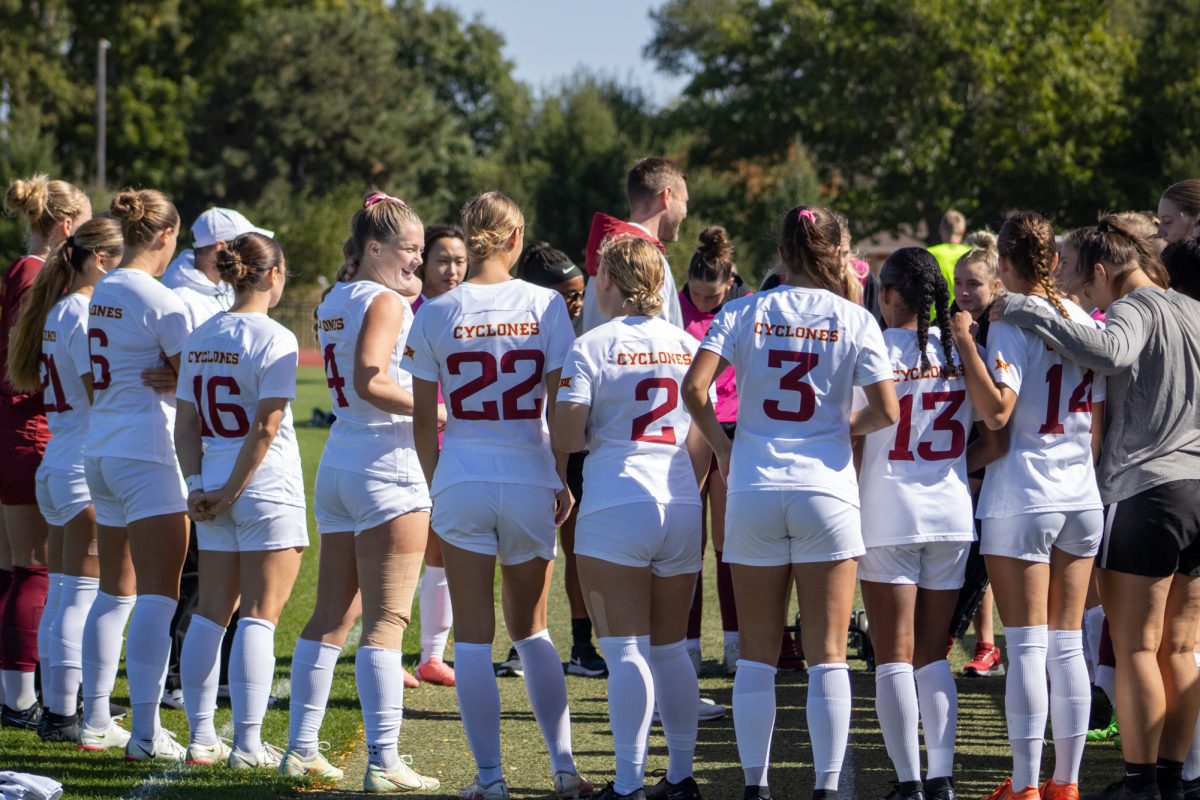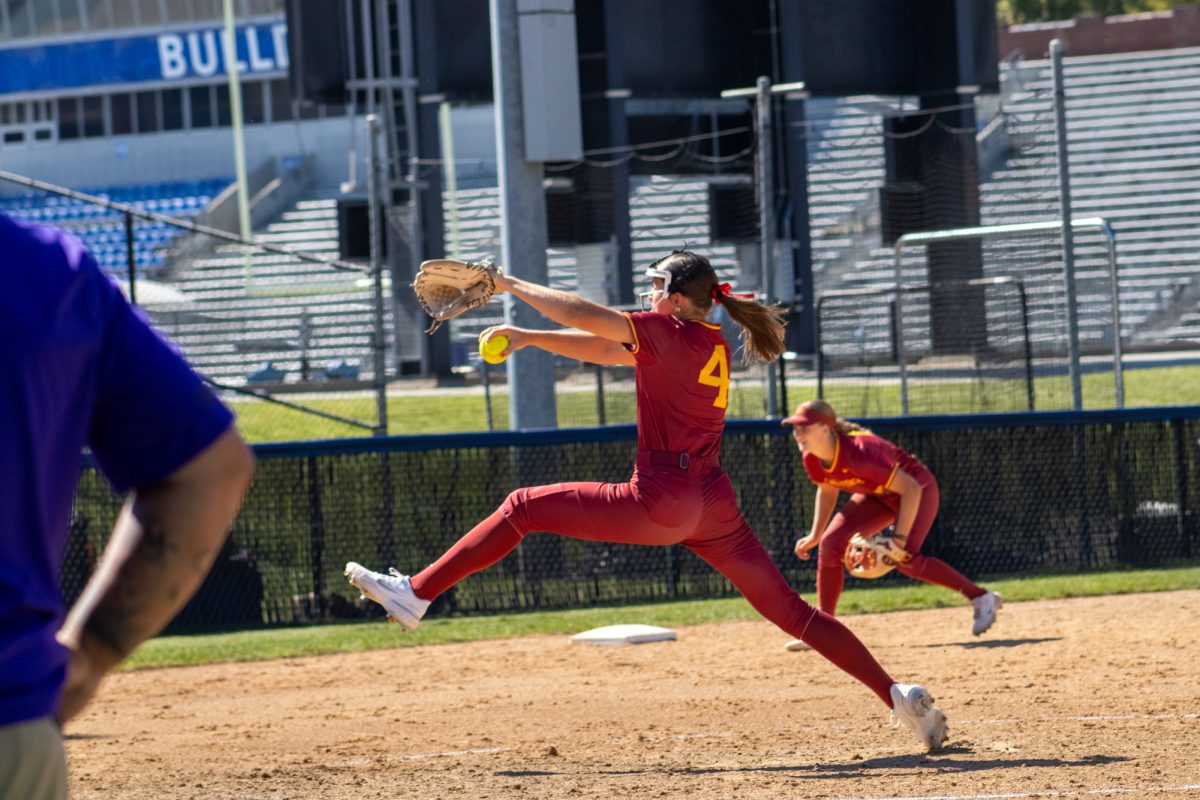New academic standards to affect Iowa State athletes
July 1, 1996
The senior running back for the Iowa State football team, Jahi Arnold, came to ISU when it was much easier for incoming freshmen to meet NCAA requirements.
“I’m glad I graduated [from high school] a few years ago, not having to worry about all this pressure,” Arnold said.
“A lot of athletes won’t make it under the new rules.”
The National Collegiate Athletic Association has raised the Division I academic standards for incoming freshmen for 1996, requiring a minimum 2.5 grade-point average in at least 13 high school core courses and at least an 820 SAT score on the new SAT scoring system or a 68 sum of the ACT subscores.
This includes a sliding scale for those who do not meet the grade-point requirement but do well on the standardized tests.
The old NCAA standards required a 2.0 grade-point in 13 core courses and a 700 SAT score, which equals an 820 on the new SAT scoring system.
There was no sliding scale.
Tim Bald, the compliance coordinator for ISU athletics, said the intention of the new standards is to allow the athletes who are prepared for college to get the education they deserve, which, in turn, should increase athletes’ graduation rates.
“The NCAA is really coming up to our standards,” he said.
At ISU, athletes are required to meet the same core classes as all other students entering the university.
“Iowa State’s not easy,” Arnold said. “I have friends playing ball all over the country and they’re telling me it’s easy.”
Arnold, a pre-business major, said he achieved a 2.8 grade-point average at his high school in Downey, Calif., but he worries that the new rulings will prevent young athletes from playing college football.
For many athletes who have hopes of playing professional football, the only choice left, he said, is to go into the junior college programs and work up to a four-year school.
Due to the new standards, recruiting football players from the junior college level will be a “major switch,” said Steve Loney, offensive coordinator for ISU football.
Under the present rules, the students must have 35 percent of the junior college’s graduation requirements completed in addition to the 48 credit hours required by the NCAA prior to leaving for a NCAA Division I sports program.
“This will make it harder for junior college athletes to transfer to schools like ISU,” he said.
Loney said he was in favor of the new rules because it helps Division I institutions to have an even chance at recruiting.
According to an article in the Feb. 16 edition of the The Chronicle of Higher Education, many critics say the stricter rules shut out a number of athletes who are black or are from low socioeconomic backgrounds.
“That’s a debate we go through 100 times a day,” said Jayme Olson, a senior in psychology and center for the ISU women’s basketball team. “It is socially biased, but people have been making it out bigger than it really is.”
Gene Smith, ISU athletic director, said, “There may be student athletes who may be in the public schools who don’t get the teaching provided in many parts of our country.”
He said the issue of fairness for athletes entering college then centers on whether the standardized tests are biased.
Citing his own upbringing as an example, he said that when he took the SAT there was a question involving a sloop, a type of sailing boat. Since he was raised in Cleveland, he said he had no way of knowing about sailing boats.
“That’s not racially biased,” he said. “That’s socioeconomic.”
Bald disagrees. He said that when another ethnic group such as Asian immigrants, who haven’t lived in the United States for much of their lives, can excel at the standardized tests, then the tests must not be biased.
He said what is needed is people who spend the time it takes to study for the standardized tests.
The NCAA’s sliding scale, Bald said, allows incoming freshmen to make up for possible poor test results with a good high school grade-point average.
“It’s not biased when you’re competing with peers in your own school,” he said.
The NCAA standards allow for partial qualifiers for student-athletes who score below the required standardized test score but have a high grade-point average.
These athletes are allowed to enter the school and receive athletic scholarships, but are not eligible to compete their freshmen year.
For non-qualifiers, they cannot receive scholarships, but may attend the institution with financial aid. They are not eligible to play their freshmen year.
However, here at ISU this exception does not apply, according to Bald.
Bald said the good news is that the Big 12 is working to have similar standards for incoming freshmen athletes. But the bad news is that many institutions, such as Michigan and Illinois, still allow non-qualifiers to enter their universities.
Loney said, “I think what people care about is that the individual is not treated unfairly. They want to make sure a kid gets a chance. If it’s fair across the board, people can live with it.”
Bald said student athletes are often misinformed by their high schools about the necessary courses, but over the past few years the situation has gotten better.
“Everybody is getting the information in the timely fashion. The NCAA is making that possible,” he said.
But, he added, “certain situations still arise.”
Olson said she feels the new standards are good for student-athletes across the country.
“I don’t think being an athlete should be different than being a normal student. Education is the whole purpose of coming to college,” said Olson.






